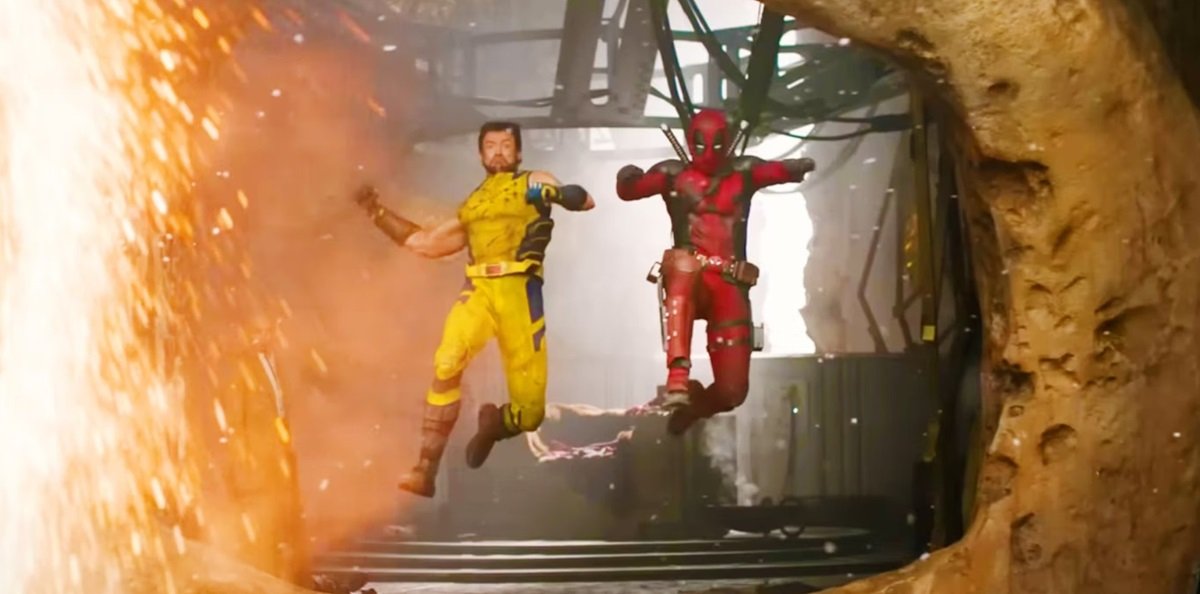Ryan Reynolds and Hugh Jackman’s MCU debut raised some obvious questions. How does their team-up connect to Fox’s X-Men movies? What did the film reveal about the TVA, the Void, and the Sacred Timeline? And when, where, and how did this crossover take place in the multiverse? Deadpool & Wolverine provided the same answer to all those questions and more: it doesn’t matter, because making sense of timelines and canon is not the point of the movie. Deadpool & Wolverine only cared about delivering a wildly entertaining, fun farewell to an entire era of superhero stories.

If you spend any time trying to “figure out” Deadpool & Wolverine‘s finer technical points—the kind we normally obsess over—you’ll quickly realize a lot of it doesn’t make sense. For example, Ryan Reynolds’ Prime Deadpool lives in the same universe, Earth-10005, as the Wolverine of Logan. That Wolverine was also that universe’s “anchor being,” and his death began (what would have been) Earth-10005’s eventual collapse. Yet that Logan died in the year 2029, five years after the setting of Deadpool & Wolverine. So if Wade could use a TVA TemPad to travel to the future and dig up that Logan’s corpse, why didn’t Wade jump to a point in the timeline where Logan was still alive instead?
Because it doesn’t matter. Just like it doesn’t matter if Earth-10005 is where every Fox era film took place in regards to the MCU. (Speaking of timelines that don’t make sense.) Nor does it matter how the end of Deadpool 2, when Wade used Cable’s time travel device to change the past, fits into anything. That’s as irrelevant as why Wade applied for a job with the Avengers on Earth-616. To focus on any questions about canon, connections, and timelines after Deadpool & Wolverine, in regards to either cinematic franchise, is to miss what Deadpool & Wolverine was actually about.

Director Shawn Levy’s movie utilized the multiverse, but it wasn’t concerned with how the multiverse works. It didn’t even really care why Deadpool or Wolverine was now in the MCU at all. (Neither did it care if either will be part of it moving forward. The movie could easily serve as both Reynolds and Jackman’s final time as their characters.)
Instead Deadpool & Wolverine was about closing the book on the Fox X-Men/Marvel cinematic universe. That’s definitely over and done with, even if certain actors (like Patrick Stewart and Kelsey Grammer) are playing their X-Men characters’ Variants in the MCU. Any questions about the Fox timeline or how it fits within the MCU simply do not matter. The only explanation we need for why Ryan Reynolds’ Deadpool is now in the MCU at all is as simple as the one the Merc With a Mouth repeatedly referenced in the film: because Disney bought Deadpool’s movie rights. It’s a meta answer in a meta movie headlined by a fourth-wall breaking character. It makes perfect sense.
Maybe you hate that the film actively didn’t care about official canon or even logic. But Deadpool & Wolverine didn’t care because its focus was entirely on telling an entertaining, hilarious, emotional story that served as a celebration of an entire era of superhero movies. Its many surprise cameos work as well as they do because they weren’t included to establish those characters (or actors) in the MCU. The movie included them solely because they were fun, the single overarching ethos of Deadpool & Wolverine. This movie wanted to offer a fun experience you “felt” rather than something you had to make sense of.

Making sense of canon, timelines, and minor plot points is often the complete opposite of fun. It can be tedious and frustrating, often because it’s nearly impossible. That’s true even for the people who make these movies. Avengers: Endgame‘s directors and writers didn’t even agree on how time travel works! In an era where people use the word “homework” to describe watching most cinematic universes, especially the MCU, Deadpool & Wolverine was summer break. It was as though the film said, “School’s out! Have a blast during your time off and we’ll see you in the fall!”
That approach worked. Deadpool & Wolverine is a better movie because it actively didn’t care about unimportant details. And that meant we didn’t have to, either. Instead of questioning the logic of Wade Wilson using Logan’s skeleton, we got to merely enjoy it. Just like there was no reason to let logic prevent Jon Favreau’s Happy Hogan from showing up for an absurd job interview. That was a great scene! It was simple, unencumbered fun. That’s what the movie cared about giving us rather than explaining what Wade’s failed application in a different universe might mean for his MCU future. We can worry about that in the future if it ever matters.

Deadpool & Wolverine didn’t let the “rules” of cinematic universes with all this canon and timeline stuff stop Channing Tatum from finally playing Gambit. It didn’t let logic, canon, or anything else keep Chris Evans, Wesley Snipes, and Jennifer Garner from reprising their old superhero roles. And it definitely didn’t care if the reason Ryan Reynolds and Hugh Jackman finally got a chance to do a good Wolverine and Deapool team-up made total sense or connected movies. It didn’t do any of that because none of that mattered. The only logical explanation the film, or any of us, needed for why this movie exists is the only one the movie provided: because it could. And the only thing that matters is that it sure was fun to see.
Mikey Walsh is a staff writer at Nerdist happy to be on summer break from MCU homework. You can follow him on Twitter and Bluesky at @burgermike. And also anywhere someone is ranking the Targaryen kings.

